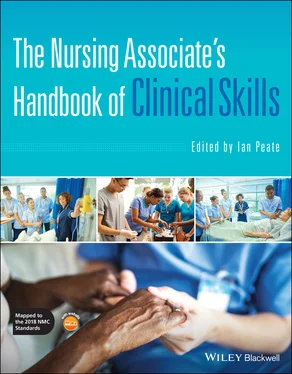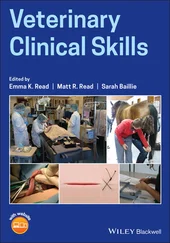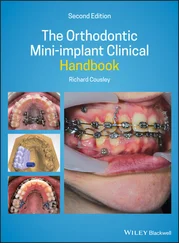The Nursing Associate's Handbook of Clinical Skills
Здесь есть возможность читать онлайн «The Nursing Associate's Handbook of Clinical Skills» — ознакомительный отрывок электронной книги совершенно бесплатно, а после прочтения отрывка купить полную версию. В некоторых случаях можно слушать аудио, скачать через торрент в формате fb2 и присутствует краткое содержание. Жанр: unrecognised, на английском языке. Описание произведения, (предисловие) а так же отзывы посетителей доступны на портале библиотеки ЛибКат.
- Название:The Nursing Associate's Handbook of Clinical Skills
- Автор:
- Жанр:
- Год:неизвестен
- ISBN:нет данных
- Рейтинг книги:4 / 5. Голосов: 1
-
Избранное:Добавить в избранное
- Отзывы:
-
Ваша оценка:
- 80
- 1
- 2
- 3
- 4
- 5
The Nursing Associate's Handbook of Clinical Skills: краткое содержание, описание и аннотация
Предлагаем к чтению аннотацию, описание, краткое содержание или предисловие (зависит от того, что написал сам автор книги «The Nursing Associate's Handbook of Clinical Skills»). Если вы не нашли необходимую информацию о книге — напишите в комментариях, мы постараемся отыскать её.
The Nursing Associate’s Handbook of Clinical Skills
The Nursing Associate’s Handbook of Clinical Skills
The Nursing Associate's Handbook of Clinical Skills — читать онлайн ознакомительный отрывок
Ниже представлен текст книги, разбитый по страницам. Система сохранения места последней прочитанной страницы, позволяет с удобством читать онлайн бесплатно книгу «The Nursing Associate's Handbook of Clinical Skills», без необходимости каждый раз заново искать на чём Вы остановились. Поставьте закладку, и сможете в любой момент перейти на страницу, на которой закончили чтение.
Интервал:
Закладка:
One way to remember how to optimise communication through body posture is the pneumonic SOLER (Egan 2010). Table 5.1provides an explanation of the mnemonic SOLER.
It is important to note that silence is a very important part of communication, and not everyone will be comfortable with that. Silence allows a person time to gather their thoughts and time to find the confidence to say what it is that they needs to say. Allowing silence will also demonstrate that the interaction is not going to be rushed and that the importance of the interaction is understood. Prince‐Paul & Kelley (2017) explain that silence can be considered as a part of mindful listening and a powerful type of non‐verbal communication.
Table 5.1 SOLER.
Source: Based on Egan (2010).
| S | Sitting squarely |
| O | Open posture (arms not crossed) |
| L | Lean forward toward the other person |
| E | Maintain appropriate Eye contact |
| R | Relax |
Box 5.2Examples of Different Question Types Focusing on Pain
| Closed | Do you have any pain right now? |
| Leading | You have pain right now, yes? |
| Open | Tell me about your pain. |
Verbal communication is an important part of active listening, and there are two different elements to this. Verbally attending is one of these elements. As discussed earlier, the communication interaction should be a conversation; in order to aid this, the use of open questions is imperative. Closed questions – where a yes or no answer is expected – allow people to give one‐word answers which are a barrier to communication; these types of questions do not encourage patients to communicate. Leading questions – where a patient is given the answer within the question – can result in patients not stating their own feelings but what they are led to agree with. These questions do not encourage communication. Open questions allow the patients to speak from their perspective with no prior expectations from the healthcare professional. Box 5.2illustrates how the same question can be asked in three different ways to elicit more information.
The other element of verbal communication is referred to as vocally attending by Webb & Mille (2011). It is important to make noises to demonstrate listening at appropriate points. These give the patient reassurance and cue them to continue. These noises may include the use of small words such as ‘a‐ha’, ‘hmm’ and ‘yes’. Another option is using reflective statements including ‘I understand’, ‘I see what you mean’ and ‘that sounds like it was difficult for you’. These demonstrate understanding which also gives reassurance and encouragement to continue. A further element of verbal communication in active listening is paraphrasing what has been said. By repeating back what has been said and paraphrasing it, it is clear that the patient has been heard and that can create a good level of trust between the patient and the healthcare professional. It also shows that the healthcare professional has understood the patient.
Orange Flag
 As you actively listen, try to identify any key words that might be used to sum up how the person may be feeling, such as:
As you actively listen, try to identify any key words that might be used to sum up how the person may be feeling, such as:
frightened, or scared
lonely
fed up, or ‘a bit down’
pain, or discomfort
worried
anxious
Another way of ensuring that open questions are used is remembering the 5WH model:
What?
When?
Who?
Where?
Why?
How?
See also Chapter 2of this text for further discussion of the 5WH model.
These 5WH questions have their origins in Aristotle’s work or even earlier (Sloan 2010) and are an excellent way of finding out information, as none of these questions can be answered with a yes or a no. This gives the patients the opportunity to use their own words to explain their situation.
Barriers to Active Listening
There are many barriers to effective communication and active listening, and healthcare does present very specific challenges. It is important to recognise these barriers and try to find a way to minimise their effect on a therapeutic relationship.
One barrier to open communication is information giving (Ali 2017). As healthcare professionals with expert knowledge, it can be tempting to want to help the person and reassure them but by interrupting and not allowing them to speak, communication is stopped. Active listening is about listening, not giving information.
Touch Point
What do you think is the biggest barrier to effective communication in healthcare?
Listening actively with a person who speaks a different language requires some consideration. The non‐verbal actions – body language and time – remain the same, but due to the use of an interpreter, the conversation will not flow in the same way. When using an interpreter, it is essential to maintain eye contact with the service user and not with the interpreter. The use of silence is more challenging when using an interpreter, but it is important to remember the technique of active listening and try to use it. Using an interpreter also has implications on both confidentiality and privacy (Nursing & Midwifery Council 2018a). Sully & Dallas (2010) explore the implications of using a family member as an interpreter and the way in which that can affect communication. Using a family member provides a conflict of interest as they are not trained in translating medical terminology; they are also emotionally involved so may not translate exactly what they should; furthermore, the patient may not answer certain questions truthfully or openly in front of certain family members. By using a family member as an interpreter, the patient is not being allowed the time and space to be honest and open with the healthcare professional.
It is also important to consider who is in the room (or the area where the interaction is taking place) during the interaction; some patients may be comfortable discussing their concerns and fears in front of other people; however, others need more privacy. It is important to establish who, if anybody, the patient is happy to have in the room during the interaction. If a wrong person is in the room, then it may hinder the communication episode entirely, and this needs to be understood and respected.
Strong accents can be difficult to understand, and this therefore can hinder communication (Sully & Dallas 2010). The accent may be from the patient or from the healthcare professional. If a patient is struggling to understand what it is that the healthcare professional is saying, they may not feel confident enough to be open and honest with them. A therapeutic relationship cannot be assumed or forced. The patients will develop this relationship and will communicate with the healthcare professional whom they feel they are able to do this with.
Open and honest communication requires privacy. An inpatient hospital environment is not always the most private place. Curtains are not soundproof, and for someone to feel comfortable enough to be open and honest, privacy is a requirement. Unfortunately, there is not a lot that can be done about this, but being aware can help. Occasionally, depending on the environment, it is possible to go to a quiet room, but that is not always the case; speaking quietly and discreetly is sometimes the best that can be done. It is important to acknowledge this limitation with the patient should it occur, and it is also essential to maintain confidentiality (Nursing & Midwifery Council 2018a).
Читать дальшеИнтервал:
Закладка:
Похожие книги на «The Nursing Associate's Handbook of Clinical Skills»
Представляем Вашему вниманию похожие книги на «The Nursing Associate's Handbook of Clinical Skills» списком для выбора. Мы отобрали схожую по названию и смыслу литературу в надежде предоставить читателям больше вариантов отыскать новые, интересные, ещё непрочитанные произведения.
Обсуждение, отзывы о книге «The Nursing Associate's Handbook of Clinical Skills» и просто собственные мнения читателей. Оставьте ваши комментарии, напишите, что Вы думаете о произведении, его смысле или главных героях. Укажите что конкретно понравилось, а что нет, и почему Вы так считаете.












